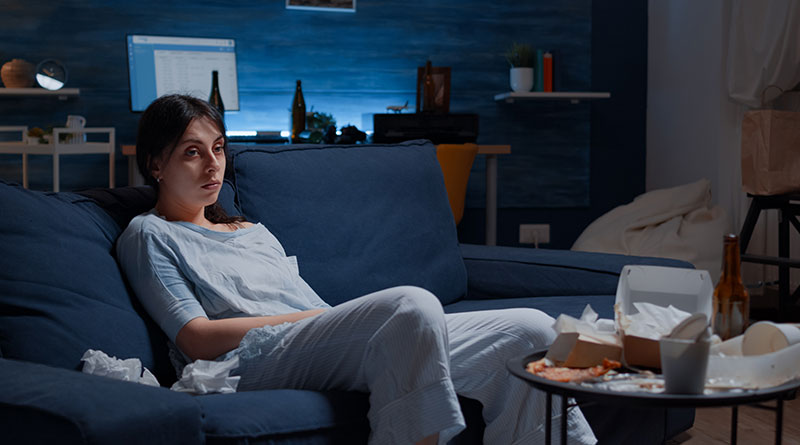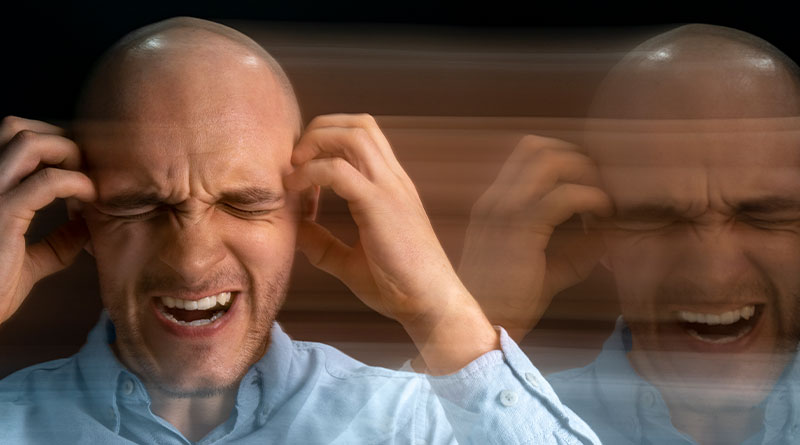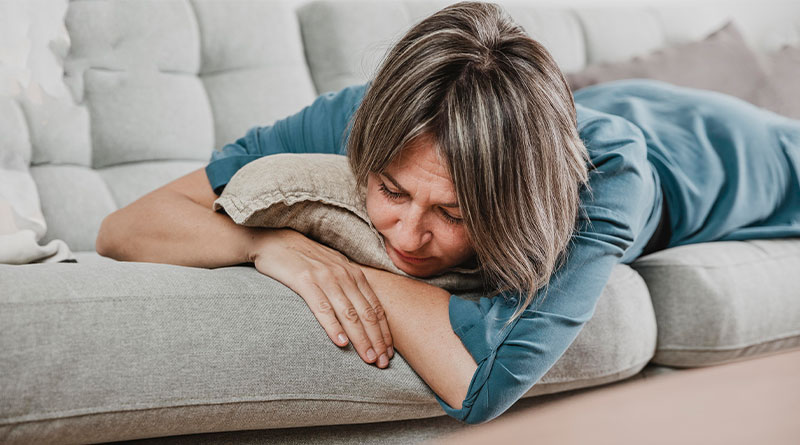Depression is a severe mental health issue that affects millions of people around the world. There are many different types of depression, and it is important to understand their differences.
In this blog post, we will be exploring the various types of depression you may not know about and providing insight into the signs. We hope this post will help you better understand this complex mental health condition.
What is Depression?
Depression is a serious mental health condition that affects how people feel, think and act. It can lead to various emotional and physical problems and decrease a person’s ability to function in everyday life.
Symptoms of depression can range from mild to severe and include changes in mood, sleep patterns, appetite, energy levels, concentration, self-esteem, and overall interest in activities. It is important to note that depression is not the same as feeling “down” or having an occasional bad day. It is a long-term mental health disorder that requires treatment.
Also Read: Don’t Let Depression Get The Best of You
Find The Common Types of Depression
There are various types of depression that affect people, here are some of them;
Major Depressive Disorder
Major Depressive Disorder is commonly referred to as a depression. It is a mental health disorder that causes a person to experience intense and persistent feelings of sadness, worthlessness, and hopelessness.
Other symptoms may include;
- Feelings of sadness
- Angry outbursts
- Loss of interest
- Insomnia
It affects the way a person feels, behaves, and thinks and can lead to a variety of emotional and physical problems. People with the major depressive disorder may also struggle with substance abuse and other mental health issues such as anxiety disorders.
Persistent Depressive Disorder
Persistent Depressive Disorder (PDD) is one the types of depression that last for at least two years or longer. PDD is also called Dysthymia or chronic depression. PDD is characterized by a low mood, difficulty concentrating, and little to no motivation. People with PDD often have feelings of worthlessness, guilt, and despair, which can interfere with their daily lives.
Bipolar Disorder
Bipolar disorder is a mental health condition characterized by dramatic shifts in mood, energy, and activity levels. It is also known as manic-depressive disorder or manic depression.
Symptoms include;
- Depression all-day
- Fatigue
- Hopelessness
- Poor concentration
People with bipolar disorder experience extreme highs (known as mania) and extreme lows (known as depression).
- Mania: Mania is typically described as an elevated mood state where an individual may have elevated self-esteem and display excessive amounts of energy. During a manic episode, people may engage in risky behaviors such as substance abuse or impulsive spending.
- Depression: Depression is the opposite of mania and involves feelings of sadness, low energy, and feelings of worthlessness. Depressive episodes can last for weeks or months at a time, making it difficult to carry out everyday tasks.
Also Read: All You Know About Anxiety
In between these episodes, people with bipolar disorder may be stable and functioning normally. Bipolar disorder is a lifelong condition that requires ongoing treatment to manage symptoms.
Seasonal Affective Disorder
Seasonal Affective Disorder (SAD) is a type of depression that occurs during certain seasons, typically in the fall and winter months when there is less natural sunlight.
It has similar symptoms to other types of depression;
- Feeling worthless
- Sleep problems
- Feeling depressed all-day
- Changes in appetite
It is thought to be caused by a biochemical imbalance in the body due to the lack of sunlight.
Postpartum Depression
Postpartum depression (PPD), also known as postnatal depression, is a type of mood disorder that affects some women after giving birth. This is the most common complication of childbirth, affecting up to 20 percent of women.

Some common symptoms include;
- Mood swings
- Crying too much
- Loss of energy
- Inability to sleep
- Loss of appetite
Within the first few weeks or months after giving birth, postpartum depression can begin and last for several months.
Atypical Depression
Atypical Depression is one of the different types of depression that is characterized by increased sensitivity to rejection, unusual levels of comfort-seeking, and mood reactivity.
Some common symptoms include;
- Sadness
- Insomnia
- Fatigue
- Recurring thoughts of death and suicide
Atypical depression affects individuals in different ways, often resulting in an overall feeling of heaviness, fatigue, sleepiness, and irritability.
Psychotic Depression
Psychotic Depression is a severe form of depression that is characterized by a combination of severe depression and psychotic symptoms. The symptoms are those that are not part of typical behavior, such as hallucinations and delusions.
- Hallucinations: Hallucinations are false perceptions of things that don’t actually exist. They can occur in any of the five senses and often involve seeing, hearing, feeling, or smelling something that isn’t real.
- Delusions: Delusions are false beliefs that are held by an individual despite evidence to the contrary. They are a symptom of various mental illnesses, including depression, and can cause a person to feel disconnected from reality.
Individuals with Psychotic Depression often have difficulty functioning in daily life, as the severity of their symptoms can make it difficult for them to concentrate or complete tasks.
The symptoms may include;
- Fatigue
- Disturbed sleep
- Changes in appetite
- Feeling guilty for no reason
It is more common in people who have a history of mental illness, such as schizophrenia or bipolar disorder. People with Psychotic Depression may also experience more extreme symptoms than those with other types of depression, such as paranoia and hallucinations.
According to the World Health Organization, depression is the leading cause of disability worldwide, with more than 264 million people affected by this illness in 2022 alone. That’s equivalent to 4.4% of the world’s population.
Conclusion
Depression is an incredibly complex condition that affects people in different ways. Knowing about the various types of depression can help you to understand and identify the condition in yourself or others, as well as seek proper treatment.
While no two people experience depression in the same way, it is important to note that all types of depression can be managed with the help of a qualified mental health professional. If you or someone you know is struggling with depression, take action to get the help you need.
Also Read: Male Performance Anxiety Solutions
FAQs
Q: What causes depression?
Ans: The exact cause of depression is unknown, but it is believed to be a combination of biological, psychological, and environmental factors. These include genetics, life events, certain medications, and physical illness.
Q: How we can treat depression?
Ans: Treatment for any type of depression typically involves a combination of medication and psychotherapy. Other treatments may include lifestyle changes such as exercising regularly, avoiding drugs and alcohol, getting enough sleep, and engaging in activities that bring joy. In some cases, electroconvulsive therapy (ECT) may also be used.
Q: Is depression preventable?
Ans: While depression cannot always be prevented, steps can be taken to reduce the risk. These include living a healthy lifestyle, managing stress levels, avoiding drug and alcohol use, and seeking help.
Sahil Sachdeva is the Founder of curemedoc.com and a Digital Marketing professional with 6+ years of experience. If you need help in Content writing and want to increase your website ranking, connect with him, as he has some premium websites where you can share blogs with DoFollow links and increase your website’s ranking on Google.





